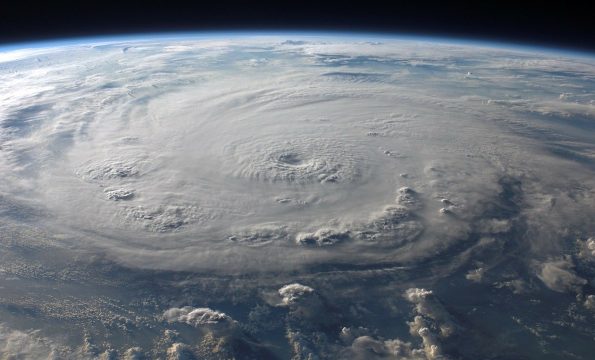CNet, by Amanda Kooser: Barry. Dorian. Humberto. Lorenzo. Last year’s Atlantic hurricane season was devastating. The bad news is stronger hurricanes are part of an ongoing trend.
Hurricanes are getting windier. That’s the sobering conclusion of a study led by National Oceanic and Atmospheric Administration (NOAA) scientist James Kossin at the University of Wisconsin-Madison. The paper appeared in the Proceedings of the National Academy of Sciences journal on Monday.
The study looked at satellite data from 1979 to 2017 and found that the maximum sustained winds of tropical cyclones (hurricanes and typhoons) have gotten stronger over time. “Through modeling and our understanding of atmospheric physics, the study agrees with what we would expect to see in a warming climate like ours,” Kossin said in a release from the University of Wisconsin-Madison.
The data points to an increased probability of tropical cyclones becoming major storms that reach categories 3, 4, or 5 on the Saffir-Simpson wind scale. For example, Hurricane Dorian hit the Bahamas in late 2019 as a Category 5 storm with sustained winds of at least 157 mph (252 km/h).
The 2020 Atlantic hurricane season begins on June 1, and NOAA will reveal its initial outlook for the season later this week. Last year, NOAA forecast a near normal season, but the definition of normal seems to be changing and “normal” can still be deadly.
Kossin has been tracking hurricane data for years. He led a 2018 study that found hurricanes are slowing down, increasing local rainfall and flooding.
The new study suggests increasingly intense tropical cyclones may indeed be tied to climate change. “It’s a good step forward and increases our confidence that global warming has made hurricanes stronger,” said Kossin, “but our results don’t tell us precisely how much of the trends are caused by human activities and how much may be just natural variability.”
Our Comment:
The Bible compares the signs of Jesus’ coming to birth pains (Matthew 24:8, translated “sorrows” in the KJV). Birth pains grow more intense and more frequent as the time of the birth approaches. Similarly, we are seeing an increasing intensity and frequency in the natural disasters, wars, pestilences, and other signs spoken of in Matthew 24 as Jesus’ coming nears.
Prophetic Link:
“The restraining Spirit of God is even now being withdrawn from the world. Hurricanes, storms, tempests, fire and flood, disasters by sea and land, follow each other in quick succession. Science seeks to explain all these. The signs thickening around us, telling of the near approach of the Son of God, are attributed to any other than the true cause. Men cannot discern the sentinel angels restraining the four winds that they shall not blow until the servants of God are sealed; but when God shall bid His angels loose the winds, there shall be such a scene of strife as no pen can picture.” Testimonies for the Church, vol. 6, page 408.






Comments